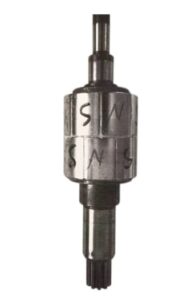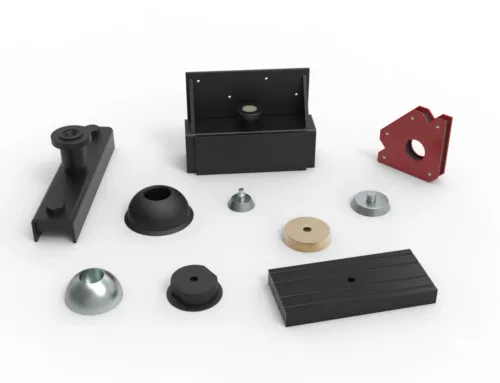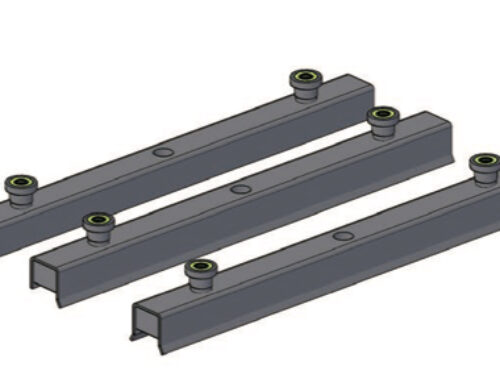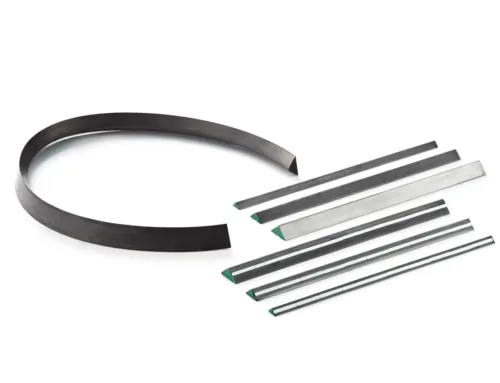Understanding Rotor Magnets
Definition of Rotor Magnet
A rotor magnet is a key magnetic component attached to the rotating part of an electric motor or generator known as the rotor. These magnets create a magnetic field that interacts with the stator to produce motion or electricity. In essence, rotor magnets convert electrical energy into mechanical energy or vice versa, depending on the device.
Role of Rotor Magnets in Motors and Generators
In motors, rotor magnets generate the magnetic field that works against the stator’s magnetic field, causing the rotor to spin and produce mechanical power. In generators, the rotor magnets cut through the stator windings, inducing electrical current by electromagnetic induction. This interaction enables efficient energy conversion in both systems.
Interaction with Stator Components
Rotor magnets and stator components work together closely. The stator, usually stationary and equipped with coils or magnets, provides a fixed magnetic field. The rotor’s magnets rotate within this field, creating continuous torque or electrical output through magnetic attraction and repulsion. This dynamic interaction is crucial for smooth operation and efficient energy transfer.
Basic Principles of Magnetic Fields in Rotating Machinery
Magnetic fields in rotor magnets follow the fundamental laws of electromagnetism. The rotor’s magnetic poles (north and south) interact with the stator’s magnetic poles, producing forces that cause rotation. The alignment and strength of these fields determine the motor or generator’s performance. Effective magnetic field management ensures maximum torque, efficiency, and reliability in rotating machinery.
By understanding how rotor magnets function and interact within these systems, designers and engineers can optimize motor and generator performance for various applications.
Types of Rotor Magnets

magnetic rotor assembly
When it comes to rotor magnets, there are two main types: permanent magnets and electromagnetic rotors.
Permanent magnets are made from materials that keep their magnetic properties without needing extra power. They’re common in brushless DC motors and other efficient designs because they reduce energy loss. Electromagnetic rotors use coils of wire that generate a magnetic field only when electric current runs through them. These rotors give more control but usually need more energy and complex control systems.
Common Magnetic Materials
Most permanent rotor magnets use rare earth materials to provide strong magnetic performance:
- Neodymium (NdFeB) magnets are the go-to choice in many U.S. industries because they offer incredible magnetic strength and are relatively cost-effective.
- Samarium cobalt magnets excel in high-temperature environments and resist corrosion well.
- Ferrite magnets are cheaper and more resistant to heat but have weaker magnetic power compared to rare earth types.
Shape and Design Classifications
Rotor magnets also come in different shapes and mounting styles based on their application:
- Surface-mounted magnets are glued or mounted on the rotor surface. They’re easier to manufacture and repair, but the magnets are more exposed to damage.
- Buried magnets are placed inside the rotor, offering better protection and higher mechanical strength, which helps with high-speed applications.
- Inset magnets sit flush within the rotor surface to balance protection and efficient magnetic interaction.
Advantages and Disadvantages
| Type | Advantages | Disadvantages |
|---|---|---|
| Permanent Magnets | High efficiency, low energy loss, compact | Can demagnetize under heat or stress |
| Electromagnetic Rotors | Adjustable magnetic field, better control | Higher energy use, complex design |
| Surface-Mounted | Easy to install and service | More vulnerable to damage |
| Buried Magnets | Stronger mechanical stability | More costly and complex to make |
| Inset Magnets | Balance of protection and performance | Moderate manufacturing complexity |
Material Considerations for Rotor Magnets
Choosing the right material for rotor magnets is key to how well motors and generators perform. The magnet’s strength, durability, and ability to handle heat all depend on this choice. If the material isn’t right, the rotor won’t deliver the efficiency or lifespan you need.
Common magnetic materials include:
- Neodymium (NdFeB): Known for its powerful magnetic strength, making it ideal for high-performance motors. It does require proper temperature control to avoid losing magnetism.
- Ferrite: More affordable and corrosion-resistant but has lower magnetic strength, often used where cost is a bigger factor than power.
- Samarium Cobalt: Offers excellent temperature resistance and durability but comes at a higher price point, suitable for demanding environments.
NBAEM specializes in supplying a range of these magnetic materials, ensuring consistency and reliability for U.S. customers who want top-quality components. Their expertise guarantees that you get the right material tailored to your motor or generator’s specific needs.
When selecting rotor magnet materials, consider:
- Temperature resistance: Can the magnet handle the heat generated during operation without losing strength?
- Magnetic strength: Does the material provide sufficient power for your application?
- Durability: How well does it resist corrosion, mechanical wear, or demagnetization over time?
For a deeper understanding of how magnetic materials impact motor technology, check out NBAEM’s resource on magnetic materials in motor technology.
Manufacturing and Design Aspects
Creating rotor magnets isn’t without challenges. The manufacturing process has to be precise because even small mistakes can affect magnetic strength and motor efficiency. Key challenges include handling brittle materials like neodymium magnets, ensuring magnets stick securely to the rotor, and maintaining exact magnetic orientation for optimal performance.
When designing rotor magnets, size and shape matter a lot. The magnet’s dimensions need to fit the specific motor or generator design, whether it’s surface-mounted or buried inside the rotor. Magnetic orientation is crucial—it controls how the magnetic field interacts with the stator, impacting torque and efficiency.
Surface treatment and coating are also important steps to extend the magnet’s lifespan. Applying protective coatings helps prevent corrosion, especially in harsh environments, and reduces wear from friction or impact. These coatings also improve thermal stability, which is key for magnets working in high-temperature conditions, common in motors used in the U.S. automotive and industrial sectors.
Applications of Rotor Magnets
Rotor magnets play a crucial role across various industries, powering many devices and systems we rely on daily. Here are some key areas where rotor magnets make a difference:
-
Electric Motors
From brushless DC motors to synchronous and induction motors, rotor magnets help create the magnetic fields necessary for smooth and efficient motor operation. Their magnetic properties directly impact motor performance and reliability.
-
Generators and Alternators
In generators and alternators, rotor magnets convert mechanical energy into electrical energy. Strong, durable magnets improve output and efficiency, which is vital for power generation in many sectors.
-
Automotive Industry and Electric Vehicles (EVs)
With the rise of electric vehicles, rotor magnets have become central in electric motor design. High-performance magnets like neodymium improve motor power, reduce weight, and increase driving range — all critical factors for modern EVs.
-
Renewable Energy Systems
Wind turbines rely on large, powerful rotor magnets to convert wind energy into electricity efficiently. The demand for high-temperature and corrosion-resistant magnets is especially important here due to harsh operating conditions.
-
Industrial Machinery and Robotics
Precision and durability are essential in industrial machinery and robots. Rotor magnets ensure consistent torque and speed control, making automated systems more reliable and responsive.
In all these applications, choosing the right rotor magnet affects efficiency, durability, and overall system performance—key considerations for businesses and consumers across the United States market.
Maintenance and Troubleshooting of Rotor Magnets
Keeping rotor magnets in good shape is crucial for reliable motor and generator performance. Here’s what you need to know about inspecting and maintaining them.
How to Inspect Rotor Magnets for Wear or Damage
- Visual Check: Look for cracks, chips, or any surface damage on the magnet. These can affect magnetic strength.
- Measure Magnetic Strength: Use a gauss meter to test if the magnet still holds the required magnetic field.
- Check for Corrosion: Especially in harsh environments, corrosion can degrade magnets. Look for rust or discoloration.
- Physical Fit: Ensure the magnets are firmly attached to the rotor. Loose magnets cause imbalance and damage.
Common Issues and Their Causes
- Demagnetization: High heat or strong opposing magnetic fields can weaken rotor magnets. This reduces motor efficiency.
- Corrosion: Moisture and chemical exposure lead to surface rust, which can cause the magnet to deteriorate.
- Mechanical Damage: Vibration, impacts, or improper handling during assembly can chip or crack magnets.
Best Practices to Extend Rotor Magnet Life
- Store magnets away from moisture and extreme temperatures.
- Use protective coatings or surface treatments to prevent corrosion.
- Ensure proper motor cooling to avoid overheating.
- Avoid physical shocks during handling and installation.
- Regularly monitor magnet performance using appropriate tools.
Following these steps helps maintain your rotor magnet’s performance and longevity, which is essential for electric motors, generators, and EV applications where reliability matters. For more on how to improve magnet performance, check out NBAEM’s insights on practices in magnetic material production.
Future Trends in Rotor Magnet Technology
The future of rotor magnet technology is looking exciting with ongoing advances in magnetic materials. Researchers are developing stronger, lighter magnets that boost motor efficiency while reducing energy loss. New alloys and improved manufacturing techniques are pushing the boundaries of magnetic strength and temperature resistance, making rotors more reliable under tough conditions.
Innovation in rotor magnet design is also evolving fast. Designers are optimizing magnet shapes, placements, and orientations to maximize magnetic flux and minimize heat buildup. These improvements help electric motors, especially brushless DC motors and synchronous types, run smoother and last longer—key for applications in electric vehicles and renewable energy.
Sustainability is becoming a bigger focus as well. Recycling rare earth elements like neodymium and samarium cobalt from old magnets is gaining traction to reduce environmental impact and dependence on mining. Companies are exploring eco-friendly coatings and manufacturing processes to make permanent magnet rotors greener without sacrificing performance. This trend meets the growing demand in the U.S. market for environmentally responsible yet powerful magnetic materials.
Why Choose NBAEM for Your Magnetic Material Needs
NBAEM stands out as a top supplier of high-quality magnetic materials, especially for rotor magnets used across various industries in the United States. Here’s why NBAEM is a trusted choice:
Unique Selling Points
- Wide Range of Products: From neodymium (NdFeB) magnets to samarium cobalt (SmCo) and ferrite magnets, NBAEM offers a broad selection tailored for different motor and generator applications.
- Advanced Manufacturing: Precision in size, shape, and magnetic orientation ensures consistent performance across batches.
- Material Expertise: Specialized in rare-earth magnets with excellent magnetic strength and temperature resistance, perfect for demanding environments.
- Custom Solutions: Ability to create surface-mounted, buried, or inset rotor magnet designs based on customer needs.
Commitment to Quality and Consistency
- Strict Quality Control: Every batch undergoes thorough testing to meet industry standards.
- Durability Assurance: Use of coatings and surface treatment prolongs magnet life, reducing maintenance downtime.
- Reliable Supply Chain: Consistent lead times and flexible order sizes make NBAEM a dependable partner.
Customer Success Stories
Many U.S. companies in the automotive, renewable energy, and industrial sectors rely on NBAEM’s magnets for their smooth motor and generator operations. Positive feedback often highlights:
- Improved motor efficiency due to stronger magnetic materials.
- Longer magnet lifespan cutting maintenance costs.
- Responsive support and customization that fit specific project requirements.
For a deeper look at the materials NBAEM offers, check out the permanent magnet applications in modern technology and learn why their neodymium magnets are a smart choice for wind generators at NdFeB magnet used in wind genertor.





Leave A Comment